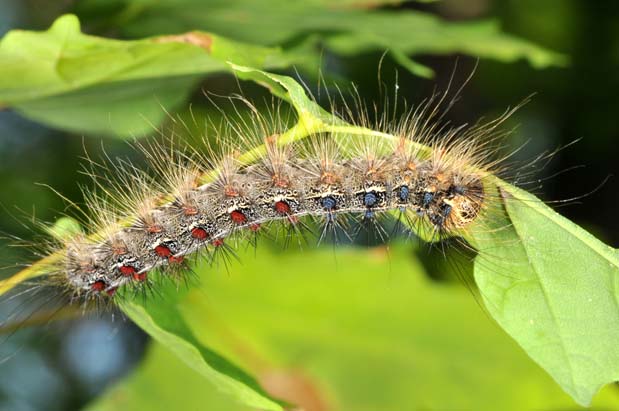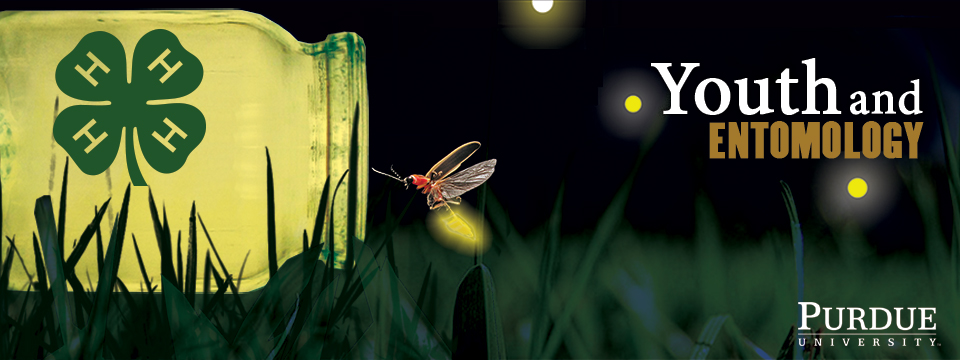

|
|
Gypsy Moth larva
(John Obermeyer, Purdue University) |
|
Common Name: Gypsy Moth - larva
See also: adult | damage Scientific Name: Lymantriidae: Lymantria dispar Status: introduced pest of hardwood trees Damaging Stage: caterpillar Biology: Gypsy moths have wings with variable patterns of black spots and bands. Males have brown wings and feathery antennae whereas females are cream-colored, and have threadlike antennae. Gypsy moth caterpillars are dark-colored and have five pairs of blue spots followed by six pairs of red spots along the body. They are approximately 2 inches long when mature. Larvae have yellow and black head capsules and are completely covered in small hairs. Caterpillars prefer oaks but may feed on several hundred different species of trees. Female moths lay egg masses indiscriminately on trees, houses, and other structures in late summer. Often campers unknowingly spread this pest when egg masses are attached to recreational vehicles. Gypsy moths survive the winter in the egg stage and hatch in the spring when temperatures are above 60°F. Eggs are laid in mid- to late summer. They complete one generation per year. |
 |
||||||||||||||||
|
|
|||||||||||||||
|
Purdue Extension Entomology, 901 West State Street, West Lafayette, IN 47907 USA, (765) 494-4554 Department of Entomology | College of Agriculture | Extension © Purdue University | An equal access/equal opportunity university | Integrity Statement | Copyright Complaints | Maintained by ENTM IT Trouble with this page? Disability-related accessibility issue? Please contact us at entmwebmaster@purdue.edu so we can help. | ||||||||||||||||
